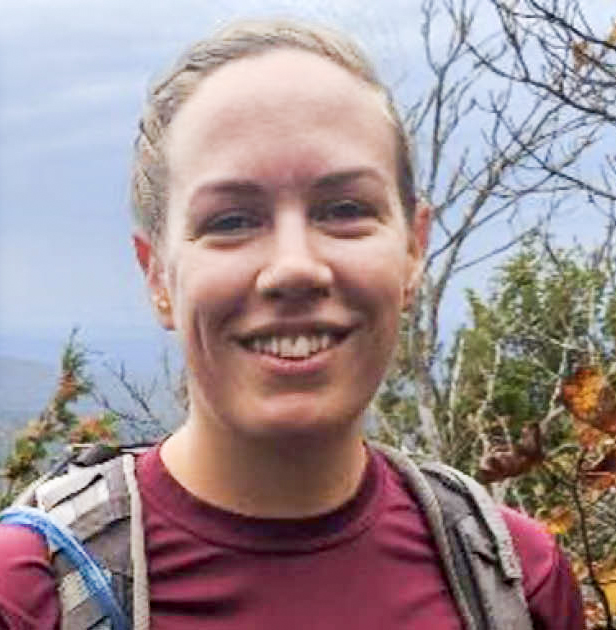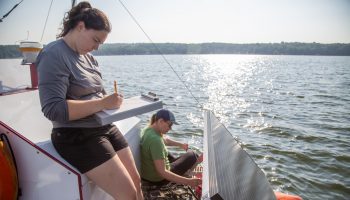
Emma Francois
Contributing Writer
Much ecological research, though complicated, is easy to picture. The interactions between flora, fauna, and their surrounding landscapes can be visualized and observed, sometimes even without the help of a microscope.
Lake ecology, however, is a different story.
“It’s a lot going on below the surface,” said research scientist Allison Hrycik. “This aquatic stuff, you’re using instruments that can tell you what’s going on down there, but you’re not directly seeing all these organisms interacting. It’s a little bit more mysterious.”
At her 9:15 a.m. lecture today in the Hurlbut Church Sanctuary for the Chautauqua Science Group and Chautauqua Climate Change Initiative, Hrycik will provide an update on The Jefferson Project, now in its fifth year at Chautauqua, and discuss harmful algal blooms on Chautauqua Lake.
Before her current role with The Jefferson Project and Darrin Freshwater Institute, Hrycik researched benthic invertebrates and water quality on the Great Lakes. She earned her Ph.D. from University of Vermont, where she studied how winter conditions affect algae blooms in the open water season.
Now, she devotes her expertise to studying nutrient inputs, namely nitrogen and phosphorous, from the Chautauqua Lake watershed; gauging lake bottom algae; and collaborating with colleagues on Lake George and Chautauqua Lake to paint a clearer picture of the catalysts and effects algal blooms have on our lakes.
“I’m interested in figuring out what’s going on,” Hrycik said. “The curiosity of what’s happening keeps me driven, but also the desire to make things better and help push research forward — even if sometimes it’s not the most uplifting.”
Mark Wenzler, Peter Nosler Director of the Chautauqua Climate Change Initiative, shared Hrycik’s emphasis on education and action.
“Algae are an important part of our ecosystem and have naturally occurred in Chautauqua Lake since it formed at the end of the last ice age,” he said. “But human activities have resulted in an overabundance of algae that can sometimes turn toxic. How, when, and why this happens is incredibly complex. We are fortunate to have a top expert like Dr. Hrycik working on answers that will ultimately help identify ways to reduce harmful algae blooms in Chautauqua Lake.”
Hrycik hopes her talk and ongoing work will help Chautauquans appreciate how complicated cleaning and caring for freshwater lakes are, and how much time, effort, research and money are necessary to combat hundreds of years of human development, runoff and exploitation.
“Around Chautauqua Lake, we’re lucky that people are so interested and invested in water resources,” Hrycik said. “Sometimes that complicates things … but it also provides a really good opportunity for
people to work together on the lake.”




